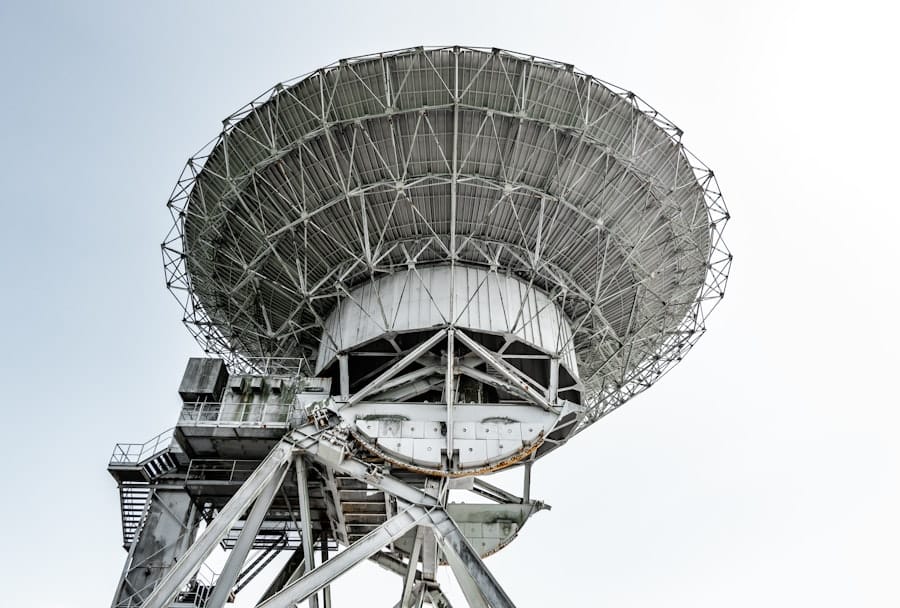The rapid evolution of technology has ushered in an era where artificial intelligence (AI) plays a pivotal role in various sectors, including telecommunications. As wireless communication becomes increasingly integral to daily life, the demand for efficient and reliable signal transmission has surged. Wireless signal optimization is a critical aspect of telecommunications, ensuring that users experience seamless connectivity and high-quality service.
The integration of AI into this domain has revolutionized how networks are managed, analyzed, and optimized. By leveraging machine learning algorithms and data analytics, AI can enhance the performance of wireless networks, addressing challenges such as interference, congestion, and coverage gaps. The significance of AI in wireless signal optimization cannot be overstated.
Traditional methods of network management often rely on manual adjustments and static configurations, which can be inefficient and slow to respond to dynamic changes in network conditions. In contrast, AI-driven solutions can analyze vast amounts of data in real-time, enabling proactive adjustments that enhance signal quality and user experience. This article delves into the fundamentals of wireless signal optimization, the transformative role of AI in analyzing signal data, and the future implications of this technology in network management.
Key Takeaways
- Artificial Intelligence (AI) plays a crucial role in optimizing wireless signals by analyzing and improving signal data.
- Wireless signal optimization involves adjusting signal strength and coverage to enhance network performance and user experience.
- AI algorithms can analyze large volumes of signal data to identify patterns and make real-time adjustments to improve signal strength and coverage.
- AI improves signal strength and coverage by dynamically adjusting parameters such as power levels, antenna configurations, and frequency allocation.
- Integrating AI in wireless signal optimization leads to more efficient network management, improved user experience, and better overall network performance.
The Basics of Wireless Signal Optimization
Wireless signal optimization involves a series of techniques and strategies aimed at improving the quality and reliability of wireless communication. At its core, it seeks to maximize the efficiency of signal transmission while minimizing interference and loss. Factors such as signal strength, coverage area, and user density play crucial roles in determining the overall performance of a wireless network.
To achieve optimal performance, network operators must continuously monitor and adjust various parameters, including frequency allocation, power levels, and antenna configurations. One fundamental aspect of wireless signal optimization is the concept of signal-to-noise ratio (SNR). SNR measures the level of a desired signal relative to the background noise present in the environment.
A higher SNR indicates a clearer signal, which translates to better data transmission rates and fewer dropped connections. Techniques such as beamforming and MIMO (Multiple Input Multiple Output) are employed to enhance SNR by directing signals toward specific users rather than broadcasting them uniformly. These methods not only improve individual user experiences but also increase overall network capacity by reducing interference among users.
The Role of Artificial Intelligence in Analyzing Signal Data

Artificial intelligence has emerged as a powerful tool for analyzing the vast amounts of data generated by wireless networks. Traditional analysis methods often struggle to keep pace with the complexity and volume of data produced by modern telecommunications systems. AI algorithms, particularly those based on machine learning, can process this data efficiently, identifying patterns and anomalies that may not be immediately apparent to human operators.
One application of AI in signal data analysis is predictive analytics. By examining historical data on network performance, AI can forecast potential issues before they arise.
For instance, if a particular area experiences frequent signal degradation during peak usage times, AI can recommend preemptive measures such as reallocating resources or adjusting power levels to mitigate the impact. Additionally, AI can facilitate real-time monitoring of network conditions, enabling operators to respond swiftly to fluctuations in demand or unexpected disruptions.
How Artificial Intelligence Improves Signal Strength and Coverage
AI’s ability to enhance signal strength and coverage is one of its most significant contributions to wireless signal optimization. Through advanced algorithms, AI can optimize various parameters that directly affect signal quality. For example, machine learning models can analyze user behavior patterns and environmental factors to determine the optimal placement of antennas and base stations.
By strategically positioning these elements based on real-time data, networks can achieve improved coverage and reduced dead zones. Moreover, AI can dynamically adjust transmission power levels based on current network conditions. In scenarios where user density fluctuates—such as during events or peak hours—AI systems can automatically increase power to accommodate higher demand or decrease it during quieter periods to conserve energy.
This adaptability not only enhances user experience but also contributes to more sustainable network operations by reducing unnecessary energy consumption.
The Impact of Artificial Intelligence on Network Management
The integration of AI into network management has transformed how telecommunications companies operate. Traditional network management often involves labor-intensive processes that require significant human intervention. In contrast, AI-driven systems can automate many of these tasks, leading to increased efficiency and reduced operational costs.
For instance, routine maintenance tasks such as software updates or configuration changes can be scheduled and executed automatically based on AI recommendations. Furthermore, AI enhances fault detection and resolution capabilities within networks. By continuously monitoring performance metrics and analyzing historical data, AI systems can identify potential issues before they escalate into significant problems.
For example, if a particular base station begins to exhibit signs of degradation, AI can alert operators to investigate further or even initiate corrective actions autonomously. This proactive approach minimizes downtime and ensures that users experience consistent service quality.
The Future of Artificial Intelligence in Wireless Signal Optimization

As technology continues to advance, the future of artificial intelligence in wireless signal optimization appears promising. The ongoing development of 5G networks presents new opportunities for AI applications in telecommunications. With 5G’s increased capacity and lower latency requirements, AI will play a crucial role in managing the complexities associated with these next-generation networks.
For instance, AI algorithms will be essential for optimizing resource allocation in real-time to meet the demands of diverse applications ranging from IoT devices to high-definition video streaming. Moreover, the advent of edge computing will further enhance the capabilities of AI in wireless signal optimization. By processing data closer to the source—at the edge of the network—AI can deliver faster insights and enable more immediate responses to changing conditions.
This shift will allow for even greater levels of automation in network management, paving the way for self-optimizing networks that can adapt seamlessly to user needs without human intervention.
Challenges and Limitations of Using Artificial Intelligence for Signal Optimization
Despite its many advantages, the integration of artificial intelligence into wireless signal optimization is not without challenges. One significant concern is the reliance on high-quality data for training AI models. Inaccurate or incomplete data can lead to suboptimal decision-making and potentially exacerbate existing issues within the network.
Ensuring data integrity and consistency is paramount for effective AI implementation. Additionally, there are concerns regarding the interpretability of AI algorithms. Many machine learning models operate as “black boxes,” making it difficult for operators to understand how decisions are made.
This lack of transparency can hinder trust in AI systems, particularly in critical applications where human oversight is essential. Addressing these challenges will require ongoing research into developing more interpretable models and establishing best practices for data management.
The Benefits of Integrating Artificial Intelligence in Wireless Signal Optimization
The integration of artificial intelligence into wireless signal optimization represents a significant leap forward in telecommunications technology. By harnessing the power of AI for data analysis, network management, and real-time optimization, operators can enhance signal strength and coverage while improving overall user experience. As networks become increasingly complex with the rollout of 5G and beyond, the role of AI will only grow more critical.
The benefits extend beyond mere performance improvements; they also encompass operational efficiencies that can lead to cost savings for telecommunications companies. As challenges related to data quality and algorithm transparency are addressed, the potential for AI-driven solutions will continue to expand, paving the way for smarter, more resilient wireless networks that meet the demands of an ever-evolving digital landscape.
com, the importance of artificial intelligence in optimizing wireless signals was discussed in depth. The article highlighted how AI technology can significantly improve the efficiency and performance of wireless networks. For further insights into the impact of technology on various industries, readers may also be interested in reading about Instagram’s founders’ return to the social media scene

